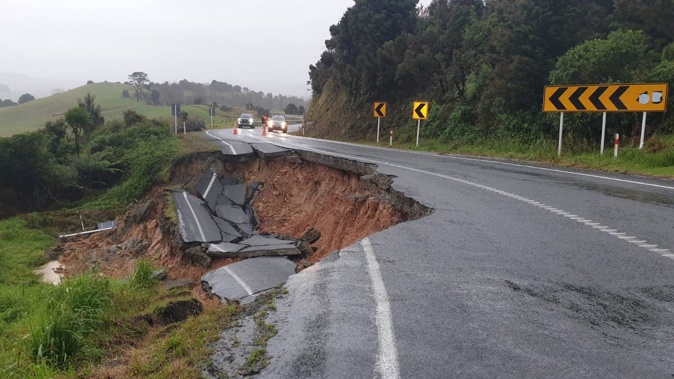
New Zealand’s roading and rail, as well as telecommunications and electricity transmission infrastructure damaged by severe weather events, will be future-proofed through a $6 billion National Resilience Plan.
It follows the near $1b announced by Finance Minister Grant Robertson on Sunday that will assist in repairing roading and rail, fixing schools and providing flood resilience support through Budget 2023.
After Cyclone Gabrielle, communities across several regions were cut-off in a variety of ways with some more rural areas isolated physically through the destruction of bridges, while telecommunication and power availability was scarce for days.
“It was unacceptable that basic lifeline services like telecommunications, power and transport links were knocked out for so long,” Robertson said.
“It identified a serious basic infrastructure problem that this investment will help to fix.
“Addressing vulnerabilities in our infrastructure systems to function during adverse conditions and quickly recover after an event is fundamental to the wellbeing of communities.”
It was in addition to the Government’s $71b infrastructure plan over the next five years.
About $100m over five years would be used to replace the Christchurch rebuild agency, formerly known as Ōtākaro Limited with a new Crown infrastructure delivery agency - Rau Paenga - which could be engaged to assist agencies to deliver the projects in the National Resilience Plan.
“Rau Paenga will use the lessons learnt in driving forward major Christchurch rebuild projects post-quake to help deliver construction projects,” Robertson said.
Treasury has estimated the damage from Cyclone Gabrielle and the Auckland Floods could cost from $9b to $14.5b.
On Sunday, Robertson and Prime Minister Chris Hipkins led a group of ministers and local MPs in Hawke’s Bay to announce an almost $1b investment into repairing basic infrastructure and provide flood resilience to at-risk communities.
Of the $941m, $475m to rebuild road and rail links that will take funding pressure off local councils.
Roughly $100m was set aside to raise stopbanks and shore up lifelines that failed during record rainfalls, which includes utilities such as water, wastewater, transport, energy and telecommunications.
The roughly 500 North Island schools damaged by the severe weather events would receive $116m for repairing and rebuilding, with additional funding for the potential redevelopment or relocation of schools.
A further $700,000 would be invested over two years for Special Reasons Staffing funding, with $315,000 of that available immediately.
The safety and wellbeing of farmers and growers would be supported through about $35m by by scaling up on-farm technical, scientific and financial advice.
Community-led mental support received $10m, including extending the successful Mana Ake programme - developed following the Christchurch quakes - into every school in the Hawke’s Bay and Tairāwhiti.
Take your Radio, Podcasts and Music with you









